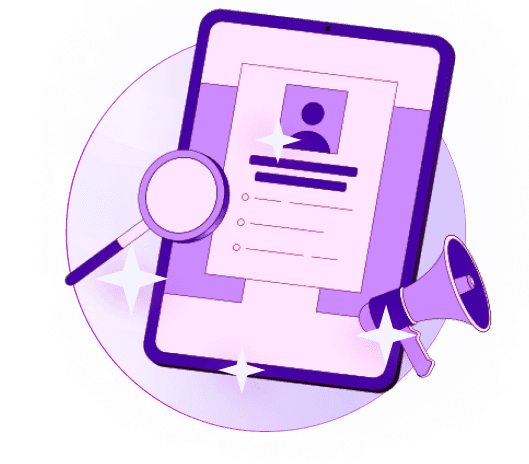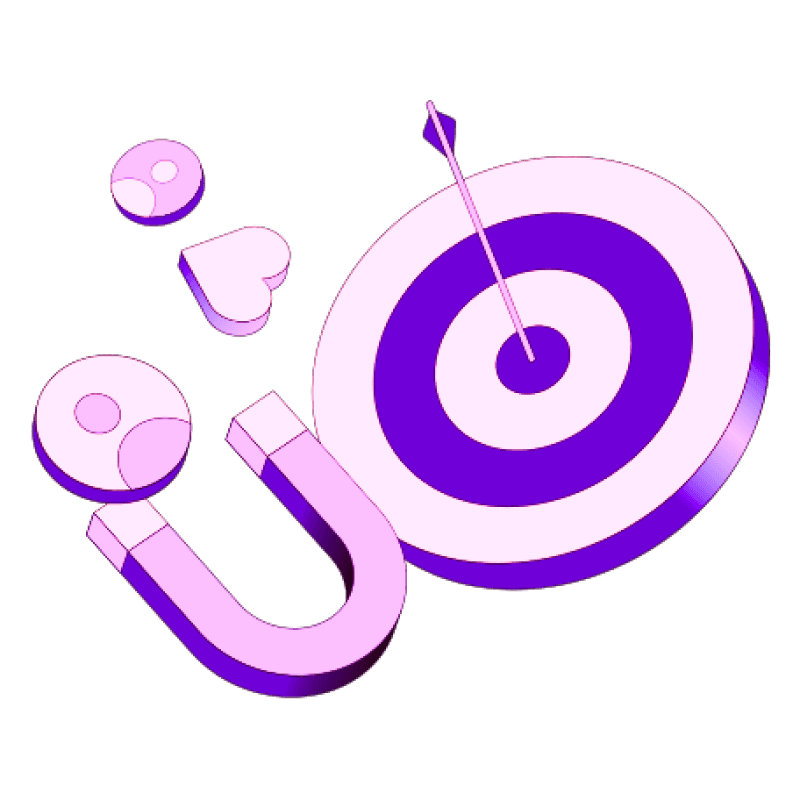Blogs
Articles

What Does SDR Stand for in Sales? Role & Responsibilities Explained
Curious about what SDR means in sales? It stands for Sales Development Representative- a vital position that generates up to 55% of a company's sales pipeline.
Cold call success rates might drop to 2.30% by 2025, yet SDRs remain the top-of-funnel professionals companies need. These professionals gather prospect data, qualify leads, and book meetings for Account Executives (AEs). One SDR typically supports 2.6 AEs, which shows their value in the sales process.
The career path looks promising - SDRs in the US earn an average of $74,764 annually. The role has changed over the last several years. Today's SDRs come with just 1 year of experience, down from 2.5 years in 2010. The shift to remote work after COVID has changed things too, with 90% of sales teams now working fully or partially from home.
This complete guide will show you everything about the SDR position. You'll learn about daily tasks, key skills, and ways to advance your career.
What does SDR stand for in sales?
The B2B sales world has made SDR stands for Sales Development Representative a crucial part of modern sales teams. Let's head over to what this job involves and why it matters.
SDR meaning and full form
Sales Development Representative is what SDR means in sales. This role is different from BDR (Business Development Representative) or ADR (Account Development Representative), though some companies use these terms interchangeably. These positions all focus on qualifying leads and creating new sales opportunities, with slight variations based on the company.
What is a sales development representative?
A Sales Development Representative specializes in finding and qualifying potential customers. They make the first contact with prospects. The top of the sales funnel is their territory, and they handle everything before a prospect decides to buy.
SDRs typically:
Research and find potential customers who fit the company's ideal buyer profile
Make outbound calls, send emails, and use social selling techniques
Qualify leads using specific criteria like company size and budget
Book appointments for Account Executives who close the deals
SDRs don't close deals like Account Executives do. Their job ends after they qualify leads and pass them to closers.
Why SDRs matter in the sales process
SDRs make the sales process smoother. They focus only on prospecting and qualification, which lets sales executives do what they do best—close deals. This specialization helps teams use resources better and convert more leads.
SDRs connect marketing and sales departments. They work with marketing-generated leads and reach out to new prospects, making sure no potential deals slip away.
Experts measure an SDR's success by "the combination of sales pipeline generation and the win rate from those opportunities". They make sure only quality leads enter the sales pipeline, which saves time and resources.
SDRs help startups and growing companies speed up their sales cycle and boost revenue—key ingredients to grow and scale.
What does an SDR do day-to-day?
A sales development representative spends their day creating opportunities and preparing the groundwork for closers. Let me get into what SDRs actually do throughout their workday.
Prospecting and lead generation
SDRs start their day by managing emails and building lists of potential clients. The process goes beyond random selection and requires strategic research to identify high-potential prospects. Their prospecting activities typically involve:
Researching companies and prospects to understand pain points
Making cold calls in focused 90-minute blocks
Sending custom emails and LinkedIn messages
Building prospecting lists with compliant contact data
Personalization plays a vital role—52% of B2B marketers plan to invest more in personalization technology for this specific purpose.
Qualifying inbound and outbound leads
After identifying leads, SDRs need to decide which ones deserve attention. The qualification process requires them to:
Check if leads match the company's ideal customer profile
Evaluate the prospect's budget, authority, needs, and timeline (BANT framework)
Learn about potential customers' challenges and requirements
Handle inbound leads (marketing-generated) and outbound leads (SDR-sourced) differently
Research shows that 37% of marketers struggle with generating high-quality leads, which makes the SDR's qualification work crucial.
Booking meetings for account executives
SDRs primarily aim to schedule meetings between qualified prospects and account executives. This work involves:
Finding convenient meeting times that work for everyone
Setting up appointments within 3 days after first conversations
Creating meeting agendas based on prospect input
Giving AEs context and background information before meetings
Collaborating with marketing and sales teams
SDRs bridge the gap between marketing and sales departments. Their regular activities include:
Giving marketing teams feedback about lead quality
Sharing insights on customer pain points and effective messaging
Making use of marketing content in their outreach efforts
Developing target strategies with sales teams
Research shows that 91% of those in sales perform better through peer learning, which shows how collaboration shapes SDR success.
Key skills and tools every SDR needs
Success as a sales development representative requires becoming skilled at essential soft skills and using the right technological tools. The best SDRs combine strong people skills with state-of-the-art resources to excel in their roles.
Top soft skills: communication, curiosity, resilience
SDRs need several key soft skills to thrive in sales environments:
Curiosity helps professionals grow and adapt to market changes. Curious SDRs learn and improve constantly instead of staying in their comfort zone. This quality helps them keep up with trends and competitor movements.
Coachability and adaptability let SDRs boost their skills through guidance and adjust to new business goals. Team members who accept coaching can improve through feedback. This makes them valuable assets to any organization.
Resilience helps SDRs handle rejection, which happens daily in sales. Sales professionals with higher resilience achieve 16% higher sales performance on average. Their mental toughness keeps them motivated despite hearing "no" often.
Empathy lets SDRs understand their prospects' challenges better. Yes, it is essential even as digital transformation changes how we communicate. Representatives connect authentically with potential clients through empathy.
Essential tools: CRM, email automation, AI assistants
Modern SDRs depend on technology to optimize their work:
CRM platforms like HubSpot, Pipedrive, and Salesforce help track customer interactions and manage outreach campaigns. These systems keep prospect data in one place, so nothing gets missed.
Email automation tools such as Mailshake and Outreach.io help create customized messages at scale. These platforms focus on deliverability with features like email warmup and verification.
AI-powered tools are changing how SDRs work. AI handles prospecting, follow-up emails, and lead scoring. This lets SDRs spend more time building relationships. To name just one example, tools like Cognism provide quality prospect data through AI Search.
Scheduling software like Calendly makes appointment setting easier. SDRs can add scheduling options directly into their customer communications.
Time management and productivity habits
Time management plays a vital role in SDR productivity. 83.4% of SDRs fail to consistently hit quota monthly because they struggle with time management.
Top performers use time blocking and split their day into focused segments. The Pomodoro technique helps SDRs concentrate intensely for short periods.
Smart prioritization matters. SDRs should focus on activities that directly bring in revenue. Weekly prospecting works best in three or four two-hour segments to keep the pipeline growing steadily.
Morning habits can make a difference. SDRs who follow well-laid-out morning routines get 60% better results than others. Creating to-do lists the night before sets up a productive next day.
How to become a successful SDR
Breaking into the sales development representative role needs strategic preparation, even without sales experience. The right approach can help you succeed in this challenging yet rewarding position.
Getting hired without prior experience
The average required experience for SDR roles has reached its lowest point—only 1.2 years. Many companies hire candidates with minimal sales experience if they show the right qualities. Hiring managers look for these traits in entry-level SDRs:
Self-motivation and curiosity
Strong communication skills (phone and email)
Organizational abilities and time management
Coachability and openness to feedback
Your application becomes stronger with customer service experience or leadership roles in sports teams or clubs. You can stand out by reaching out to hiring managers directly—this shows the exact skills needed for the job.
Training and onboarding tips
A solid onboarding speeds up your path to productivity. SDR training usually takes 4-6 weeks and uses a systematic approach where each phase builds on previous learning. The best programs mix online learning, classroom training, and hands-on experience.
You'll shadow experienced salespeople before handling calls on your own. Senior salespeople can coach you during live calls without customers hearing, thanks to technologies like "whisper mode". Note that training never stops—successful organizations dedicate weekly time for continuous learning.
Common mistakes to avoid in your first 90 days
New SDRs make mistakes that experienced representatives know to avoid. Not following up enough can hurt you—cold prospects need at least five follow-ups before they respond. Scripts should guide but not control you—robotic pitches kill genuine conversations.
Research before contacting prospects makes all the difference—skipping this step is like "navigating a maze blindfolded". Sales needs persistence, and giving up too soon leaves money on the table.
How to measure success as an SDR
Your performance will be assessed against specific standards. Top SDRs track their progress at one week, 30 days, 60 days, and 90 days. Standard metrics include call volume, conversation rates, and conversion ratios from conversations to appointments.
The subjective parts matter too. Sales leaders should watch you make calls, perform demos, and close deals—often using scorecards that measure both objective and subjective factors.
Conclusion
Learning what SDR means in sales is just the start of understanding this vital role. Sales Development Representatives are the foundations of successful sales organizations. They generate up to 55% of a company's sales pipeline despite tough conversion rates. Success in this position needs a strategic mix of communication skills, tech knowledge, and mental toughness.
The SDR role keeps changing faster. New experience requirements and remote work have changed how these professionals do their jobs. The responsibilities might look daunting at first. Breaking them down into smaller parts - prospecting, qualifying, and connecting - makes the role easier to grasp for newcomers. The clear path from SDR to Account Executive gives a structured route to grow professionally.
Your success as an SDR depends on a few key factors. Building soft skills like curiosity and resilience creates a strong base to connect with prospects. The right tech stack helps optimize your daily tasks and boost productivity. Good time management leads to steady performance during busy workdays.
Companies that want to improve their sales should think over how SDRs fit in their revenue strategy. Tools and platforms like those at Persana.ai help sales teams work smarter. These solutions can revolutionize lead generation and qualification processes.
The SDR position is challenging but opens doors to great career growth and financial rewards. If you're thinking about this career or want to improve your SDR team, note that success comes from learning, adapting, and measuring performance. The best SDRs blend sales processes with human connection - a powerful mix that propels development whatever the market looks like.

Create Your Free Persana Account Today
Join 5000+ GTM leaders who are using Persana for their outbound needs.
How Persana increases your sales results
One of the most effective ways to ensure sales cycle consistency is by using AI-driven automation. A solution like Persana, and its AI SDR - Nia, helps you streamline significant parts of your sales process, including prospecting, outreach personalization, and follow-up.



